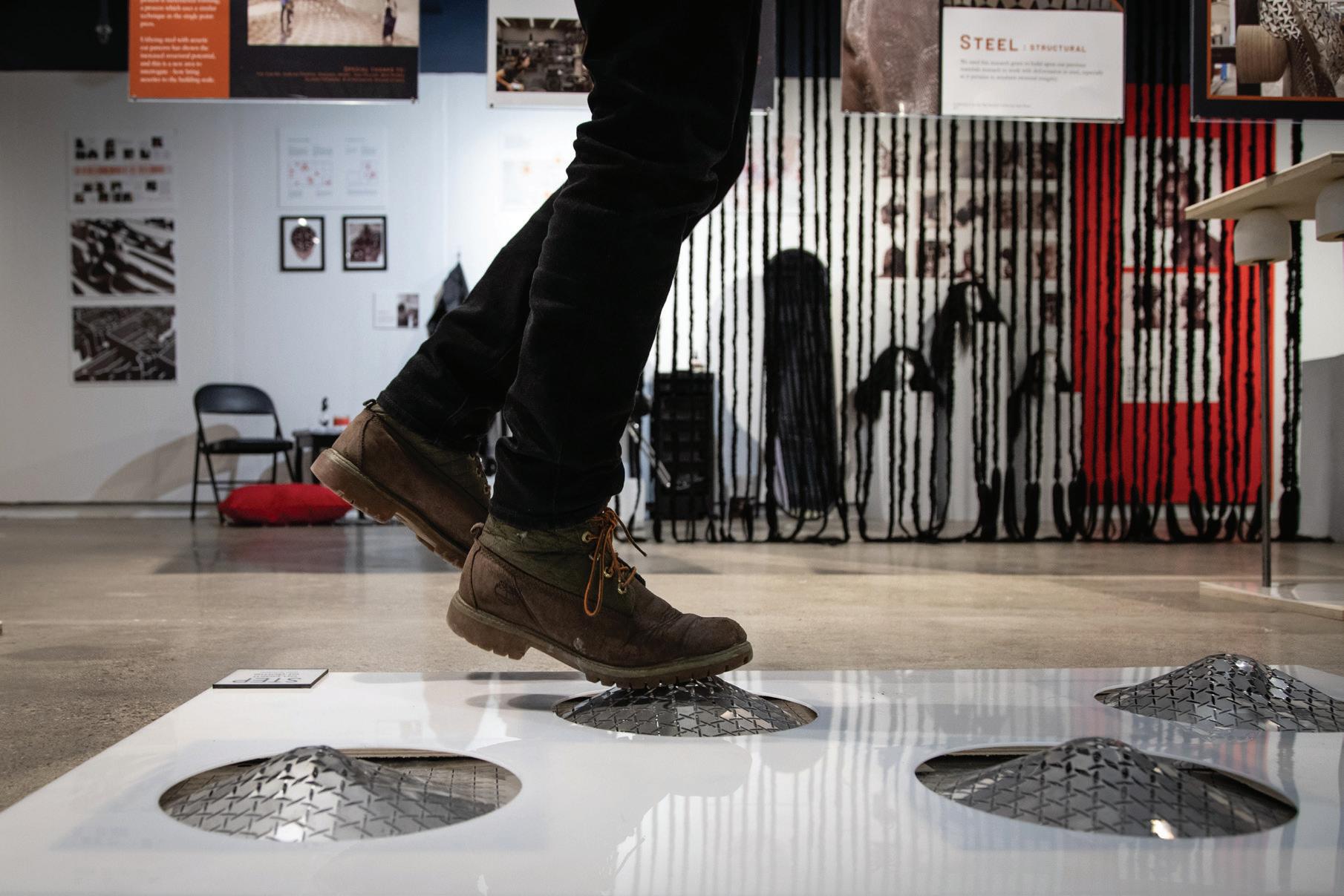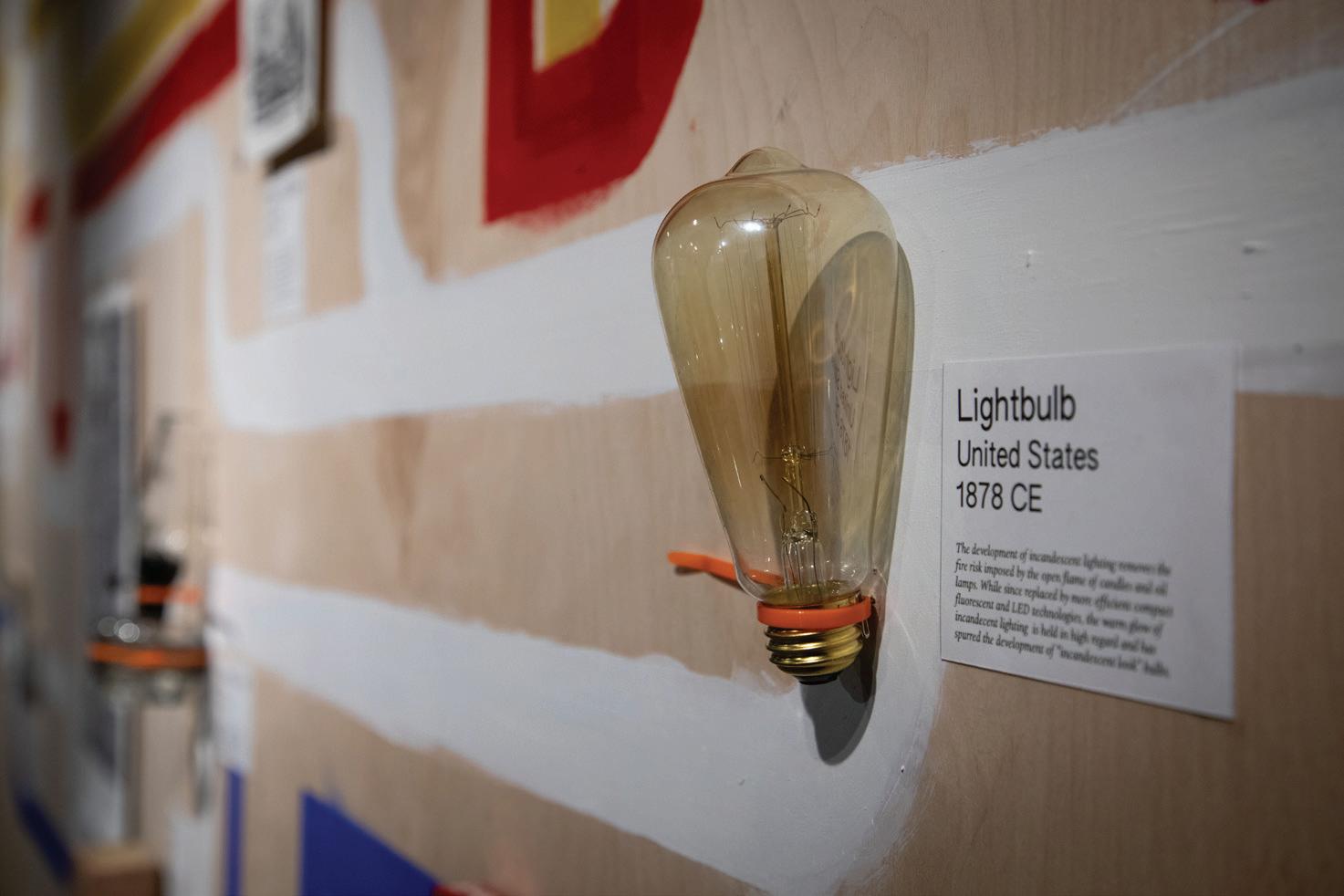
4 minute read
Architecture Student Research Grant Pushes Boundaries
THE 2019 ARCHITECTURE STUDENT RESEARCH GRANT (ASRG) exhibition in the Taubman College Gallery featured images of Grenfell Tower and Notre-Dame Cathedral on fire, a series of raised steel domes with a sign encouraging people to step on them, and a row of floor-to-ceiling hair braids. It’s fitting, given that the ASRG calls for projects that push the boundaries and possibilities of the discipline of architecture, including new forms and methods of working, making, and representing.
“Taubman College is committed to the idea that architecture is a cultural product that always negotiates a complex plurality of voices and ideas, as well as myriad social, political, and aesthetic concerns,” says McLain Clutter, program chair. “The Architecture Student Research Grant is an excellent example of our experimental mindset in action.”
The Architecture Student Research Grant, which was seeded with gifts from the Class of 2013 and continues to be funded through the generosity of Lisa Sauvé, M.Arch
’11, M.S. ’14, and Adam Smith, M.Arch ’11 (Synecdoche Design Studio, Ann Arbor), provides a unique opportunity for students to support outstanding research by their peers. The benefits for the recipients are many. “On a personal level, receiving an ASRG was the confidence boost I needed as I am beginning to understand and define my interests within architecture,” says Asya Shine, M.Arch ’20, who received a grant for “Afrotutions.” “Culturally, receiving an ASRG was an opportunity to showcase an underrepresented community within architecture and hopefully create a familiar experience for other students of color at Taubman College.”
For Sauvé and Smith, providing funding for the ASRG allows them to give students the kind of experience that they found so valuable as they launched their own careers. “Opportunities for small projects with funding were the kickstart to our portfolio. Learning independently and through the act of making simultaneous to designing had a huge impact on our creative process and how we developed an alternative practice path,” they say. “Being able to provide similar opportunities gives students the room to experiment and possibly launch their own practice, product prototype, inaugural publication, or something else. We like to think of it as no-strings-attached seed funding towards creative entrepreneurship.”
The Architecture Student Research Grant winners exhibited their work in the Taubman College Gallery in fall 2019.
We developed this idea in our Sartorial Architecture seminar with Tsz Yan Ng, “ where we were making textiles out of unconventional sheet materials. For the course, we worked with PETG and melted it over a mannequin to study the way it can form to the curves of a body. This made us think about how we could apply it at an architectural scale, which is when steel came into play.”
— Mackenzie Bruce, M.Arch ’20, and Maggie Cochrane, M.Arch ’20

Sinuous Steel: Auxetic Possibilities” “ Mackenzie Bruce, M.Arch ’20, and Maggie Cochrane, M.Arch ’20
This project explores the opportunities and limitations of auxetic patterning on steel sheets to create controlled, doubly curved surfaces. Auxetic patterns are created through nested geometries that create “hinge points.” When cut into planar sheet material, the surface is allowed to expand in multiple directions when stretched, rather than stretching parallel to the applied force. The resultant elasticity allows the material to be formed into unique forms beyond the typical capabilities of flat surfaces. The project interrogated the potential of this technique by combining fabrication technologies of the CNC Waterjet and 7-axis Kuka robot, which allow for formal, spatial, and experiential explorations with greater material efficiency in the panel and form-making process. The research involved an iterative process of experimentation of thin gauge steel sheets with various auxetic pattern geometries, sizing, and robotic toolheads that allow for the flexibility and control of the form.


Afrotutions” / Asya Shine, M.Arch ’20 “
Afrotutions” aims to inspire a strategy for design thinking rooted in “ African tradition that reimagines design aesthetics and communication. It celebrates the identity of Afro-people around the world through a historical and cultural framework. The project investigates the broad range of practices and techniques used to maintain Afrohair and showcases the implications of a traumatic yet inspiring past rooted in generations of tradition. Hair braiding interweaves a wide range of social and physical relationships: heritage, expression of individuality, community building, and means of survival. Black women and men have always communicated through the beauty of hair. Globally, hair braiding has transcended the diaspora of African people, and its formation as an institution within Afro-communities is important in our understanding of the world today.

Four Fires” / Daham Marapane, “ M.Arch ’20, and Michael Ferguson, M.Arch ’20

Fire and architecture are intimately intertwined: from prehistoric homes built around the hearth to the massive urban reconstructions following modern-era recent blazes in Oakland (the Ghost Ship warehouse), London (Grenfell Tower), Rio de Janiero (National Museum of Brazil), and Paris (Notre-Dame Cathedral). How did these fires start? What was consumed in their flames? What factors — technical, social, political — allowed them to burn the way they did? How will they be remembered? What agency and responsibility does architecture have in the prevention, mitigation, and cultural memory of catastrophic fire?












